

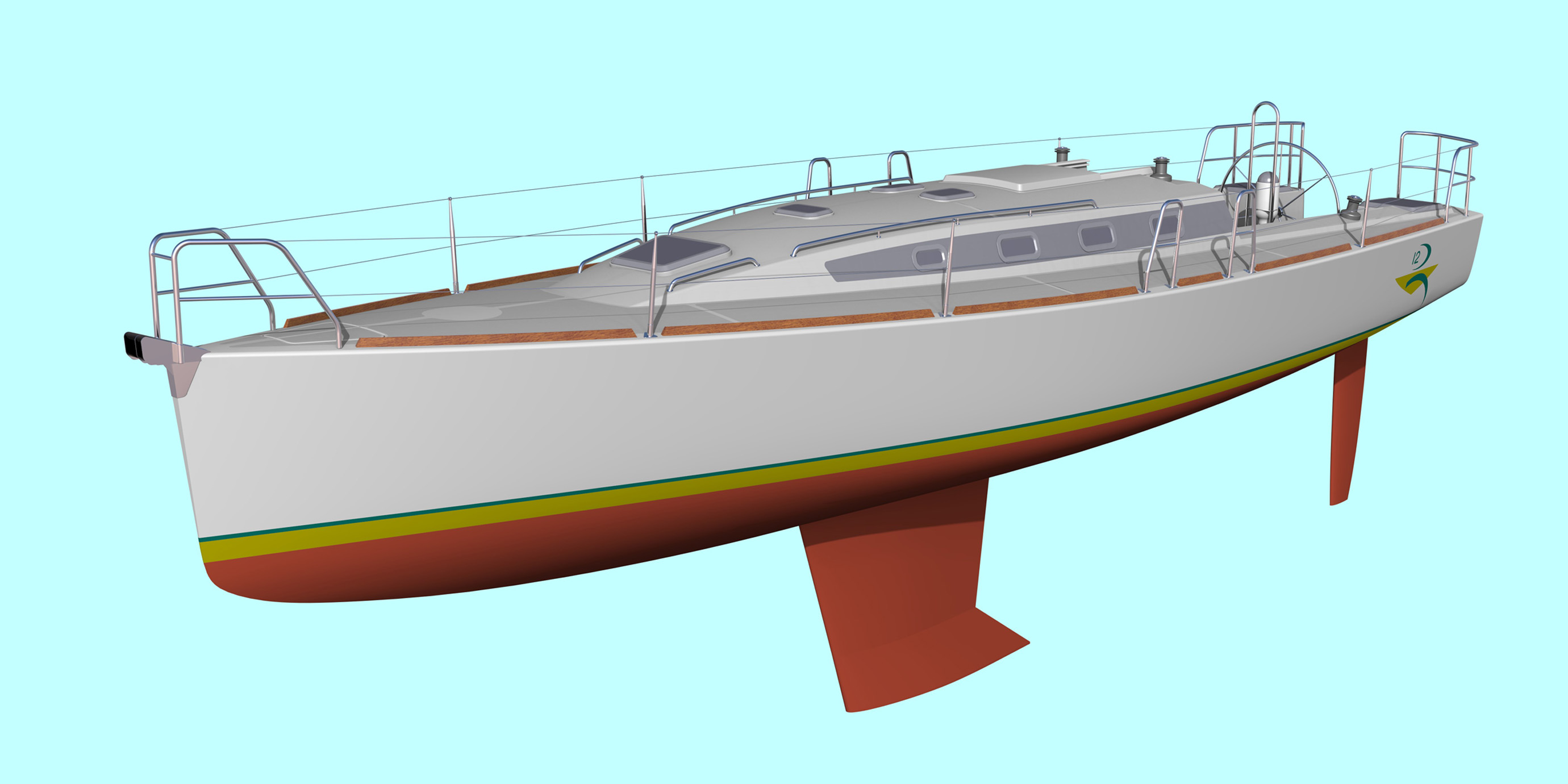
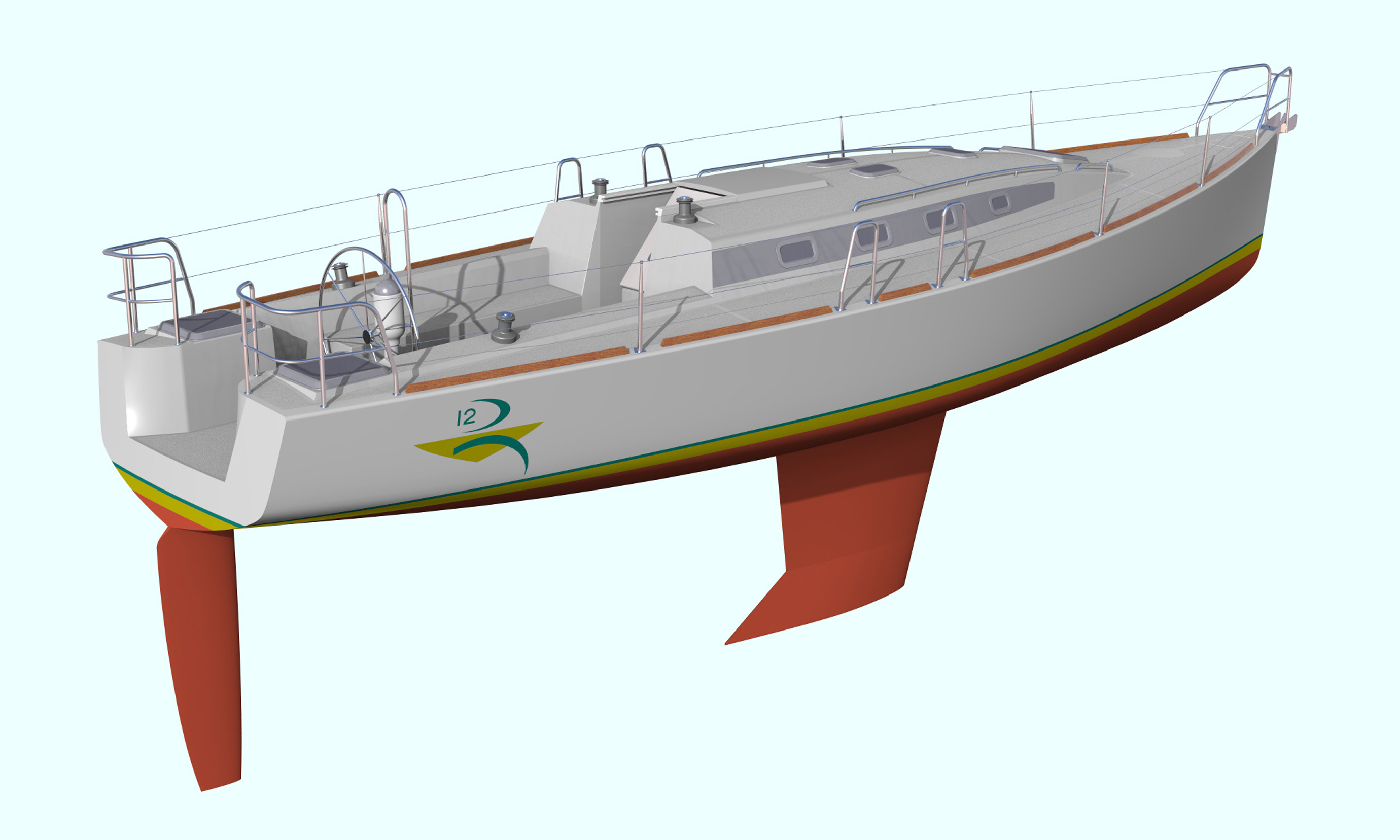
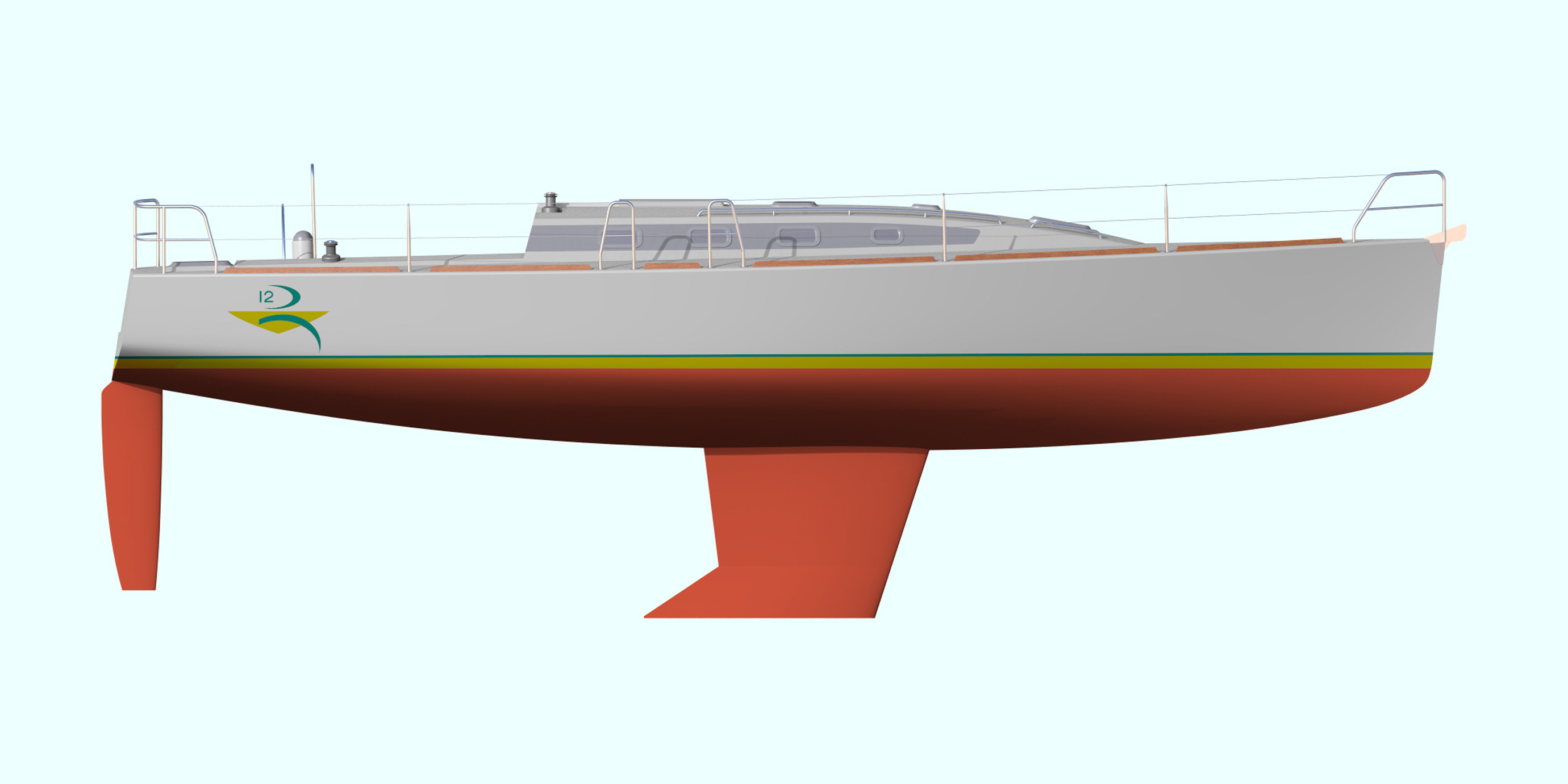
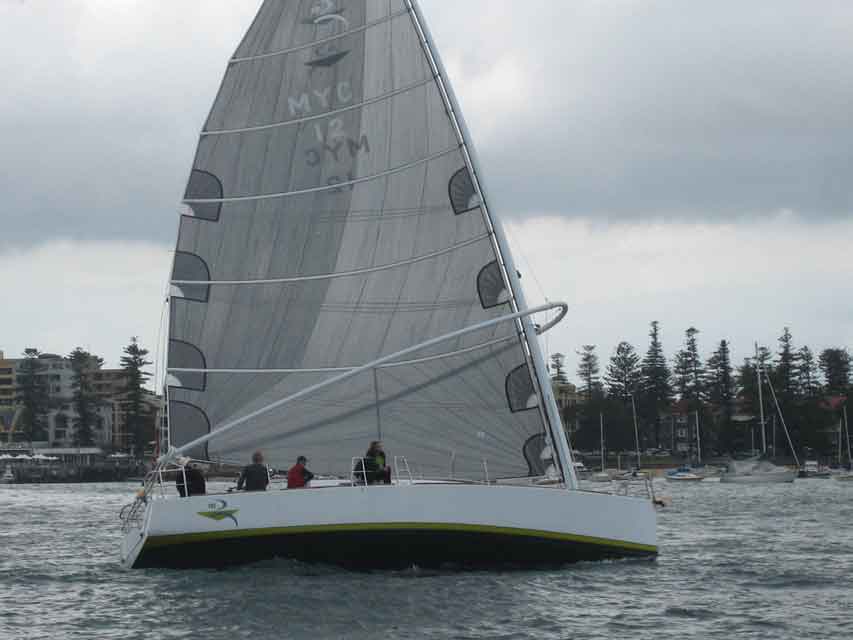
| L.O.A. | 12.00m | 39'4" |
| L.W.L. | 11.5m | 37'9" |
| BEAM | 3.4m | 11'2" |
| DRAFT - fixed keels | 2.45m & 2.10m | 8'0" & 6'10" |
| Lift Keel - DOWN | 2.8m | 9'2" |
| Lift Keel - UP | 1.6m | 5'3" |
| DSPL | 5,700kg | 12,566lb |
| SAIL AREA | ||
| Cat Rig | 89 sq m | 958 sq ft |
| Fractional Rig - Main | 44.11 sq m | 475 sq ft |
| Jib | 35.05sqm | 378sqft |

"San Toy", the unstayed cat rig Radford 12m performance cruiser seen sailing on Sydney has been joined by "Copernicus". Launched in January 2008 and sporting a conventional rig, "Copernicus" sails from the same club at Manly.
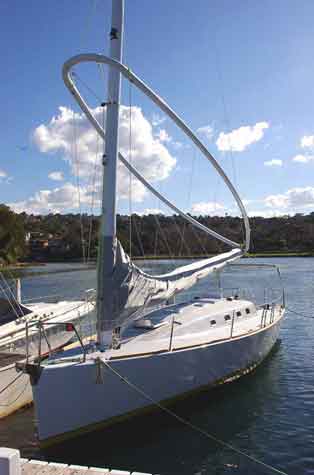
The Radford 12m design has a range of options to appeal to different areas of the yachting market but is essentially a performance cruising yacht which can also be raced.
Options include three different rigs and keels. There is a large fractional rig for racing; a smaller fractional rig for the short-handed cruising couple or; if you want something totally different, the very interesting cat rig. Keel options include a lifting keel; a 2.45m deep draft or a 2.1m draft cruising keel.
The Radford 12m breaks new ground for contemporary production yachts in Australia by offering an un-stayed cat rig for those who want to enjoy sailing with a minimum of fuss.
Having trouble finding crew but want to go sailing at any time? This 12m cat rigged yacht is an exciting option for harbour or offshoresailing, weekend club racing, Wednesday afternoon and twilight races.
The performance cat rigs already sailing in North America, appeal to those sailors who have a background in competitive sailing and who want to continue their racing without having to rely on a revolving crew list to allow them to compete.
Equally, the cat rigs have proved suitable for those who want to encourage less experienced people to participate and enjoy racing and casual sailing while not intimidating them with the sometimes confusing activity associated with conventional sailing yachts.
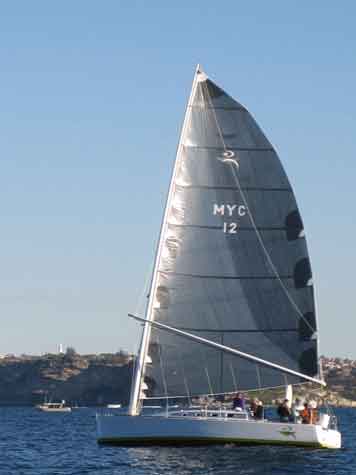
Graham Radford worked in conjunction with designer Tom Wylie at Wyliecat in San Francisco and Watsonville, CA to develop a suitable rig for the new 12m design.
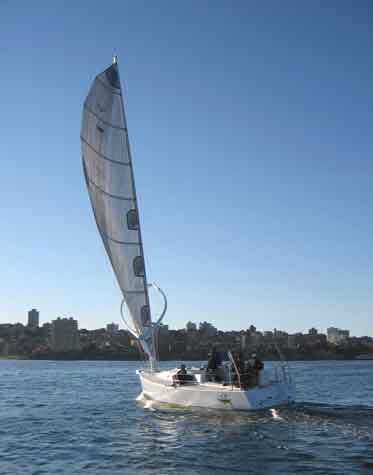
Having sailed on yachts with the performance cat rigs, Graham says "It's an eye-opener to step aboard a yacht which doesn't have stays and spreaders, spinnaker poles, spinnaker tracks on the mast, multiple halyards, headsails and spinnakers, headsail furler, headsail tracks and adjusters, spinnaker sheets and braces, mainsheet travellers and control lines, mainsheet fine tune, backstay and the myriad of other "strings" associated with a conventional sailing yachts.
The cat rig is a very simple rig with a limited number of adjustments. The mast is an un-stayed, tapered carbon fibre tube with just two halyards. The wishbone is also carbon fibre. The wishbone is sheeted at an angle more like that of a headsail at 8-10degrees off centreline. The rig is self tacking - to go about just put the helm over to the new course and continue sailing. The sheet controls the position of the wishbone athwartships and is lead to port and starboard cockpit winches. A downhaul controls the luff tension on the sail. A "choker" purchase system controls the wishbone ... pull on the choker line and the wishbone moves aft, flattening the sail.
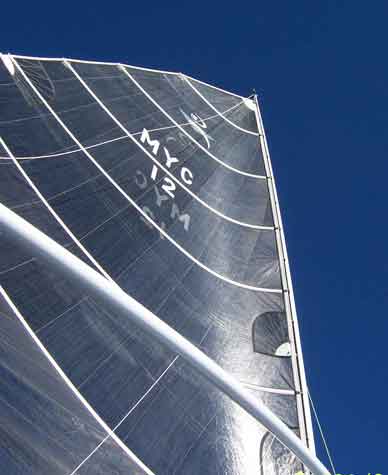
The fully battened sail with large roach includes three reefing points with reef lines running forward through the wishbone. In a fresh breeze, when trimmed for a range of wind strengths, the un-stayed mast bends in a gust to automatically de-power the sail making it possible to carry full sail much longer, before slab reefing is required.
To go sailing simply remove the sail cover, hoist the sail, adjust the downhaul, choker and sheet, and away you go. When you are finished sailing for the day, drop the halyard. The fixed lazy jacks on the wishbone recover and immediately contain the sail.
Replace the sail cover and you are finished. When was the last time you enjoyed folding and bagging a wet headsail or spinnaker, before dumping them below and going home?
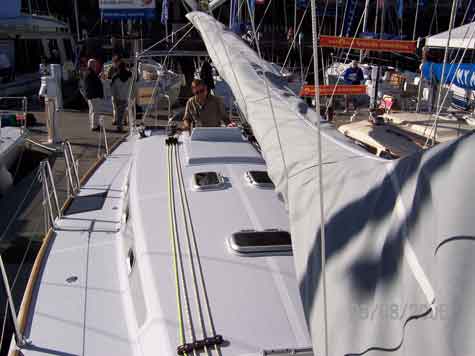
Several other design options are available. These options include a lifting keel (2.8m - 1.6m draft), a deep fixed bulb keel (2.45m draft) and a fabricated stainless steel, lead ballasted cruising keel (2.1m draft). The lift keel gives the best combination of performance and shallow draft - but is the most expensive option. The 2.1m fabricated keel is the least expensive to build and maintain.
While the cat rig will prove to be the best choice for many, other rig options include a large fractional rig for fully crewed racing or a more moderate rig for cruising. Both will use a stayed aluminium rig with swept back spreaders and no runners.
Based on his confidence in the new sail plan, the first 12m cat rig has been built for designer GrahamRadford. It has a carbon fibre mast and wishbone supplied by Wyliecat and a carbon sail from Truflo Sails, Brookvale, NSW.
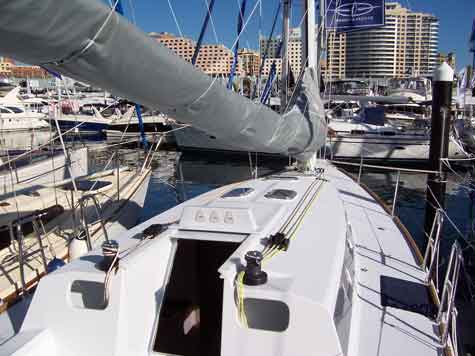
Design features include forward and aft watertight bulkheads, fwd anchor locker, large aft lazarette, liferaft stowage, aft boarding platform, watertight companionway hatch, built-in halyard tail boxes and cockpit coaming lockers. The cockpit seats for a wheel steered version are 2.0m long with additional cockpit length at the companionway hatch and aft adjacent to the lazarette hatches. There is significantly less deck gear required for the cat rig version.
The accommodation on this design is simple and practical ... We have not set out to design a triple cabin charter yacht!
There are a couple of options for the quarter berths. 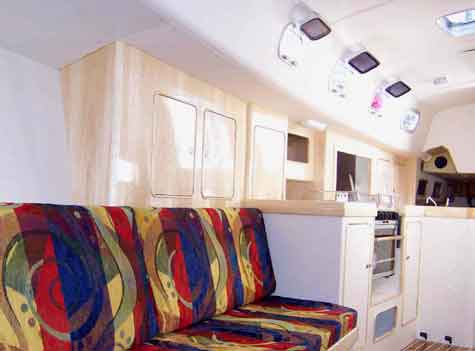 Firstly, the bunks can be 750mm wide with full height lockers, or, water ballast tanks outboard
of the quarter berths. Alternately, it is possible to have more spacious berths with overhead lockers outboard as shown on the cat rig
accommodation drawing.
Firstly, the bunks can be 750mm wide with full height lockers, or, water ballast tanks outboard
of the quarter berths. Alternately, it is possible to have more spacious berths with overhead lockers outboard as shown on the cat rig
accommodation drawing.
A 37HP engine is located under the cockpit. Forward of the quarter berths are seats and lockers. To port is a large stand up chart table incorporating fridge/freezer and lockers. The head is forward of the chart table and is adjacent to the keel case for the lift keel version. The head has a ventilation hatch and opening port in the house side. Allowance has been made for grey and black water holding tanks.
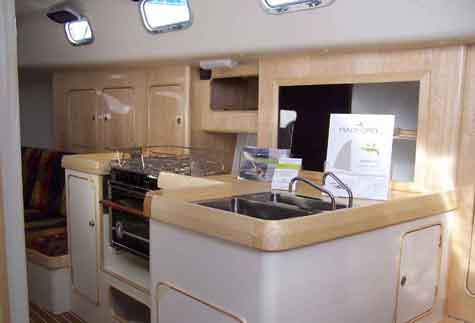
The galley is starboard, with double sinks on a return to get the sinks closer to the centreline for better drainage. Forward of the galley is the saloon, with wide settee berths and well angled seatbacks. The freshwater tanks are located under the aft half of the settees. Outboard are lockers/shelves.
The accommodation for the fractional rig version is finished off by bureaus and the forward vee berth, with sail stowage underneath. The cat rig version has a longer saloon and stowage around the mast. The saloon settees can be converted to a large double berth when in port.
The R12m is a relatively simple yacht which can fulfil many roles ... crewed racing, shorthanded racing, medium term cruising, or just fun sailing on any day of the week.